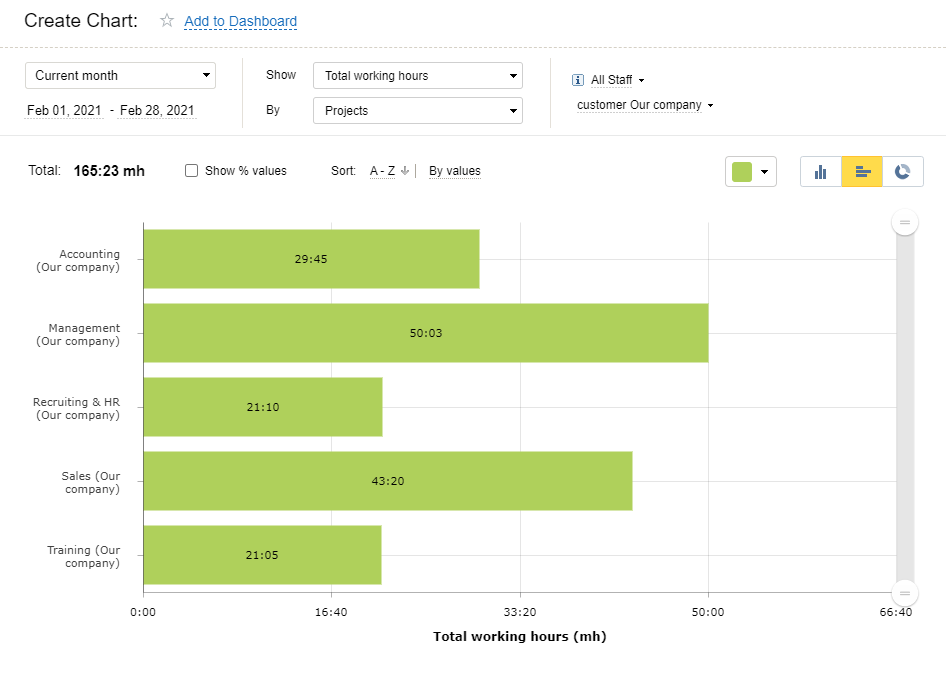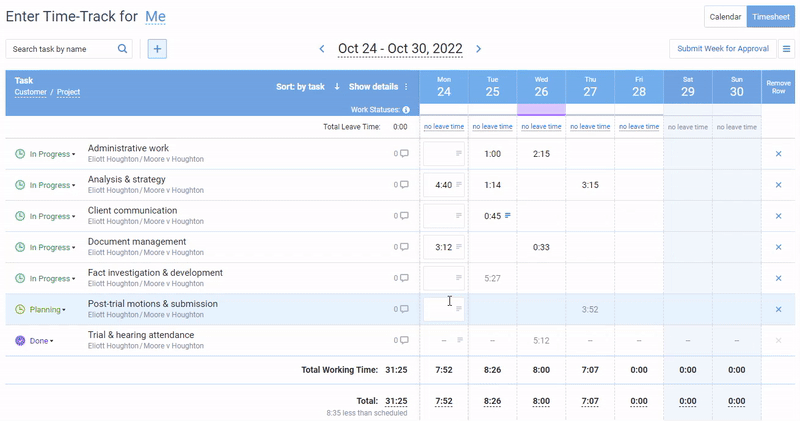
Are you looking to become an expert in project management within a marketing role? Are you frustrated with the lack of results from current strategies? With all the moving pieces, it can be hard to keep track of what works and understand how to maximize efficiency.
Whether your company is just getting started or already established in its processes, an in-depth understanding of project management fundamentals is key to success. Hence, in this guide, we’ll dive into everything you need to know about project management in marketing and explore the best practices that ensure a smoother process.
Let’s go!
What Is Project Management in Marketing?
As someone who’s interested in marketing, you know that a successful campaign needs plenty of planning and attention to detail. That’s where marketing project management comes in. It ensures that everything is running smoothly, everyone is on the same page, and the project is delivered on time and within budget.
Essentially, managing marketing projects means coordinating all the moving parts that go into a marketing campaign – from initial brainstorming to final execution. It involves planning, organizing, and completing all the various tasks that need to happen in order for the campaign to be successful. So, whether you’re a seasoned marketer or just starting out, marketing project management is definitely something to keep on your radar.
Marketing Project Management Process Explained
According to the PMBOK® Guide, the project management process contains 5 basic steps:
- Initiation – The stage where ideas are formed and project goals are established.
- Planning – It’s all about creating detailed plans and allocating resources.
- Execution – This is the meat of the project, where the work is actually done.
- Control – It’s about monitoring progress and making adjustments as needed.
- Closure – This phase brings the project to a formal end, with lessons learned and final reports submitted.
Now, let’s check out some examples of activities you need to engage in when managing marketing processes at each of these steps.
1. Initiation
- Identify and define project objectives: This involves understanding what the organization wants to achieve from the marketing project, such as generating more leads or increasing brand recognition.
- Research project scope: Research should be conducted to pinpoint potential obstacles, opportunities, target audiences, and other relevant information pertinent to the success of the project.
2. Planning
- Set a timeline and a budget: You don’t want to end up spending too much money and time on your project, do you? Establishing a timeline for the project will help you determine when each task should be completed and stay within the available budget.
- Develop a creative strategy: You need to create a strategic plan with measurable goals and deliverables – this will help to guide your team’s efforts throughout the project, contributing to its success.
- Plan promotional tactics: Consider which mediums are best suited for reaching your target audience (i.e., email campaigns, paid search ads, etc.). Then, create a plan outlining specific steps for promoting your campaign across each medium selected.
3. Execution
- Create content assets: These include videos, graphics, blog posts, white papers, press releases, infographics, etc., depending on what mediums you decide to use during the campaign launch.
- Execute campaign launch: As teams work together to complete various tasks outlined in their timeline (such as creating graphic designs or writing copy), all assets must come together at this stage in order to launch your campaign successfully.
4. Control
- Monitor performance metrics: Once the campaign has gone live it is important to constantly monitor performance metrics, such as website traffic and conversions, in order to optimize results over time based on findings from analytics software.
- Track time and overall performance progress: Time and progress tracking provides valuable insights into the project’s current state, the effectiveness of processes, and where improvements can be made to ensure that goals are achieved on schedule.
5. Closure
- Submit final reports: Managers may want to compile a final report that outlines the successes of the project, such as customer feedback data, sales figures, or other key performance indicators. This report should be submitted to upper management and also archived for future reference.
- Celebrate success: To recognize the hard work of team members, it’s useful to arrange a celebratory event and / or issue small awards or tokens to each team member. This serves as a great way to show appreciation and motivate everyone for future projects.
Main Benefits of Effective Project Management for Marketing Teams
- Increased efficiency: With effective project management comes the ability to prioritize tasks, delegate them, and manage resources effectively. These skills result in increased productivity as workloads become more manageable. Additionally, by having a proper management system in place, you will access up-to-date knowledge of your project’s progress, identify areas that require improvement, and quickly adjust your tactics if needed.
- Enhanced collaboration: Effective project management encourages team members to collaborate in order to achieve a common goal and communicate with each other to provide better insight into ongoing work progress, delegate tasks, brainstorm ideas, and solve problems faster.
- Greater ROI: Having clear objectives supported by accurate data allows marketing teams to make decisions with greater confidence that their efforts will yield the maximum return on investment. Furthermore, with access to real-time feedback on project performance, you can quickly shift focus or modify work strategies when necessary to maximize revenue potential while minimizing the costs of mistakes and failures.
- Reduced risk: With advanced project management tools in place, marketing project tracking becomes much easier. This, in turn, lets you quickly identify any potential bottlenecks or risks before they become a problem and react faster when serious issues arise.
- Improved brand engagement: Effective project management enables marketing teams to measure customer engagement with the brand more easily and respond to any problems accordingly. Thanks to regular project tracking, you will be able to customize campaigns and create more personalized content that fosters higher levels of customer loyalty and advocacy.
How to Improve Project Management in Marketing
1. Stay SMART
A great place to start with project management for marketing is by learning how to set SMART goals. What are SMART goals, you ask? They are goals that are:
- Specific
- Measurable
- Achievable
- Relevant
- Time-bound
For instance, a SMART marketing project goal could be to increase organic website traffic by 20% within 6 months via search engine optimization (SEO). This goal meets the SMART criteria because it is specific (aiming to increase organic website traffic through SEO), measurable (through website analytics tools), achievable (because a thought-trough SEO strategy is bound to increase traffic), realistic (given the 6-month time frame), and time-bound (with a specific deadline).
By setting SMART goals for a project as a whole and each of its phases, you give yourself and your team a clear target to aim for, a way to measure your progress along the way, and a deadline to work towards.
In the end, SMART goals can help you focus your efforts and achieve better results in your marketing projects. So, take the time to set SMART goals, and watch your projects soar to new heights of success.
2. Estimate resources carefully
Resource estimation is a crucial component in marketing project management. It helps to develop an accurate plan for the efficient use of personnel, time, and finances to successfully execute a marketing campaign.
Here’s how to estimate resources in an accurate way:
- Identify the scope of the project: start by defining the project’s objectives and goals. Next, you need to identify the deliverables and outcomes that need to be achieved in order to reach those goals. This will help determine the key tasks involved, the resources required, and the timeline for completion. Additionally, it is important to identify any constraints or factors that may impact the project’s scope, such as budget, time, or stakeholder requirements.
- Identify specific resources needed: Based on the list of project tasks, determine the types and quantities of resources required, including human resources, equipment, technology, and materials. Consider such factors as availability, cost, and quality when selecting resources to ensure that they align with the project goals and timeline.
- Estimate costs: Identify all potential expenses, including labor costs, materials, equipment, and any other necessary resources. It is also important to consider any unforeseen costs that may arise during the project, such as delays or unexpected expenses.
- Estimate time: To come up with a realistic deadline, it’s vital to estimate the time required for each single task involved in your project. This can be done by analyzing past project data and time reports or consulting industry benchmarks. Additionally, engaging the team responsible for executing the project can provide insights into the time required for each task. Being aware of potential roadblocks and contingencies that may arise during the project can also help in coming up with a more realistic estimate.
Pro tip:
actiTIME is an effective solution for estimating the time and performance costs of your marketing projects. Thanks to advanced time tracking features, it enables you to precisely measure the amount of time spent on specific marketing activities and keep tabs on your team’s work-related expenses.
Besides, actiTIME generates comprehensive reports that outline the progress and performance of each individual team member, as well as the entire marketing project. It helps to compare your initial estimates to actual results, analyze project costs in contrast to revenues, and see how efficiently you use your resources overall. With this information in hand, you are bound to enhance your project estimation process and get better at resource management.

Find out more about accurate project estimation with actiTIME here. 👈
3. Enhance team communication
Effective communication is key to any successful project, especially in the world of marketing. Here are some ways through which team communication can be improved:
- Establish a clear communication plan: A communication plan is a detailed outline of how team members will communicate with each other throughout the project. The plan should specify communication methods, frequency of communication and what information needs to be shared. By setting expectations, team members will have a clear understanding of when and how they will communicate.
- Create a collaborative environment: Encourage team members to work together in an open and collaborative environment. This can be facilitated by using collaborative tools, such as whiteboards, video conferencing software, and project management software. These tools help team members collaborate regardless of their location, ensuring that everyone is on the same page.
- Hold regular meetings: Scheduling regular meetings is an effective way to ensure that everyone is up to date with the project’s progress. Meetings should be kept short and focused, with an agenda that outlines the topics that need to be discussed.
- Foster open communication: Encourage team members to speak freely and openly about their thoughts, ideas and concerns. Creating an environment where everyone’s opinions are valued ensures that all team members feel comfortable sharing their ideas, which can lead to more creative solutions.
- Establish a feedback loop: Encourage team members to provide regular feedback on each other’s work. This can be done through peer reviews or by creating a process for soliciting feedback. Constructive feedback can help team members improve their work and ultimately contribute to a better outcome.
Find out how to establish effective communication in the workplace here. 👈
4. Be agile
There are many good solutions to help you manage your projects more effectively, but nothing can compare to the agile project management framework as this approach emphasizes flexibility, collaboration, and continuous improvement.
Agile invites you to break down your marketing projects into smaller, more manageable tasks and approach them in an iterative way, so you can stay on top of your to-do list, and make steady progress toward your goals with fewer mistakes and higher-quality outputs. Plus, the agile approach encourages open communication among team members, fostering a more collaborative and supportive work environment.
Pro tip:
Kanban is an Agile project management system that originated from the philosophy of lean manufacturing. It is designed to help teams optimize their workflow, increase efficiency, and ultimately produce high-quality output.
A Kanban board can help you visualize the status of each task in a project, and keep track of work progress, and ensures transparent collaboration for all team members.
actiTIME features an online Kanban board that provides a simple and easy-to-understand visual representation of your workflows. It allows you to represent tasks as cards that can be moved between columns as they progress through the different stages of the project.
By displaying the status of each task in real-time, team members can easily see what their colleagues are working on and what needs to be done next. This encourages collaboration and enables teams to identify roadblocks and find solutions quickly.
Learn how to use Kanban in actiTIME here. 👈
5. Consider risks
Identifying risks in marketing projects requires a thorough understanding of the project objectives and the marketing environment. It is essential to conduct a comprehensive risk assessment that considers potential threats and their impacts on the project’s success.
- One approach may be to conduct a gap analysis to evaluate discrepancies between current and desired outcomes. This analysis may help you pinpoint areas where risk is most likely to occur.
- Another approach is to identify potential risks through a SWOT analysis. It involves analyzing the project’s strengths, weaknesses, opportunities, and threats. Understanding the project’s strengths and weaknesses can help you identify areas for improvement, potential pitfalls, and areas where you may need to focus additional resources to ensure success. Similarly, assessing opportunities and threats can help you locate the areas of opportunity and potential obstacles that could hinder your marketing project.
Once potential risks have been identified, it is necessary to evaluate them in terms of their likelihood and impact. This evaluation may involve a qualitative or quantitative risk assessment, depending on the nature of the risks and the project’s complexity. Once risks have been assessed, mitigation strategies should be developed to address each potential risk. These strategies may include contingency plans, risk transfer, or avoidance strategies.
6. Use project management software
Juggling multiple tasks and deadlines in marketing projects is a challenge not for the faint-hearted. And to stay sane when the pressure is on, you need some help in the form of project management software that will simplify marketing project tracking and allow for a more organized work process.
So, if you want to step up your project management game, try out software like actiTIME. This tool lets you track time either manually or automatically, allocate resources more effectively, and collaborate with team members all in one place.

Here are some key ways to use actiTIME for better marketing project management:
- Track time and tasks accurately: With actiTIME, team members can easily log their hours and the specific tasks they are working on, allowing managers to gain a better understanding of how much time is being spent on each project and task.
- Monitor project progress: actiTIME provides real-time data and dashboards that allow you to keep tabs on your project progress and make any necessary adjustments to ensure you stay on track. The software can show you which team members are doing great, falling behind schedule, or going over budget, making it easier to manage resources effectively.
- Optimize your budget: By tracking time and staff-related expenses in actiTIME, you gain a clear picture of where your marketing budget is allocated and how much each project, task, or team member is costing. This allows you to make data-driven decisions about where to allocate your marketing budget and how to optimize your spending for maximum ROI.
Give actiTIME a try and see the difference it can make for your marketing team! 👈
Free Templates for Better Project Management in Marketing
- Project timesheet template
- Project task list template
- Work breakdown structure template
- Project plan template
- Creative brief template
Conclusion
All in all, marketing project management is not such a daunting task. As long as you stay organized, communicate clearly, and lead with enthusiasm you can create a memorable marketing project that will bring joy to your team members and leave a lasting impression on your audience.
Besides, there are plenty of handy tools at your disposal. actiTIME, for example, makes marketing project management seamless and efficient, enabling you and your team to collaborate better and deliver high-quality results in an organized way. So, if you’re stuck between spreadsheets, post-its, emails, and crossing your fingers that everything will fall into place, actiTIME is exactly what you need to make it much easier for yourself.
Sign up for a free trial today and get ready for success!
















































